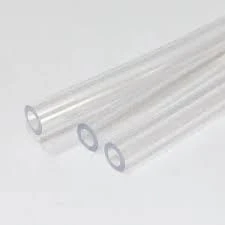nov . 04, 2024 12:43 Back to list
Drain Pipe Accessories for Efficient Plumbing and Water Management Solutions
Understanding Drain Pipe Fittings A Comprehensive Guide
In any plumbing system, the importance of drain pipe fittings cannot be overstated. These fittings are crucial components that ensure the smooth and efficient flow of wastewater from our homes and buildings into the sewage system or septic tanks. A proper understanding of drain pipe fittings not only helps in maintaining a functional plumbing system but also assists in troubleshooting any plumbing issues that may arise.
Types of Drain Pipe Fittings
Drain pipe fittings come in various shapes and sizes, each designed to fulfill a specific purpose within the drainage system. The most common types include
1. Elbows These fittings are used to change the direction of the piping, typically at a 90-degree or 45-degree angle. They are essential in navigating around obstacles or aligning with the desired drainage route.
2. Tees A tee fitting allows for the branching of the drain line. It connects three pipes, providing a way to divert wastewater from one main line into another, thereby facilitating multiple drainage routes.
3. Couplings Couplings are used to connect two sections of pipe together. They can be either straight or reduce, meaning they can connect pipes of different diameters.
4. Adapters These fittings assist in joining two dissimilar pipe materials or diameters. For instance, they can connect PVC pipes to metal pipes, ensuring compatibility across the plumbing system.
5. Caps and Plugs These fittings seal the ends of pipes. Caps are used on the end of a pipe, while plugs are inserted into the opening, effectively blocking the flow and securing the system.
Materials Used in Drain Pipe Fittings
drain pipe fittings

Understanding the materials used in drain pipe fittings is also vital for their effective application. The most common materials include
- PVC (Polyvinyl Chloride) PVC is widely used due to its lightweight, durability, and resistance to corrosion. It’s ideal for residential drainage systems where chemical resistance is needed.
- ABS (Acrylonitrile Butadiene Styrene) This material is similar to PVC but is generally stronger and more impact-resistant. It’s commonly used in underground drainage systems.
- Cast Iron Although heavier and more expensive, cast iron is durable and effective in reducing noise from wastewater flow. It is often found in older homes and commercial properties.
- Copper While not as common in drain fittings, copper is used for its antimicrobial properties and resistance to corrosion, particularly in high-end plumbing systems.
Installation and Maintenance Tips
When installing drain pipe fittings, proper alignment and secure connections are paramount to prevent leaks and ensure longevity. During installation, always check manufacturers’ instructions and adhere to local plumbing codes.
Regular maintenance is also essential. Periodically inspect the fittings for signs of wear, corrosion, or leaks. Address any issues promptly—failure to do so can lead to more severe plumbing problems and costly repairs down the road.
Conclusion
In conclusion, drain pipe fittings play a vital role in ensuring a well-functioning drainage system. With various types and materials available, it’s essential to choose the right fitting for your specific needs. Understanding their function, installation, and maintenance can significantly enhance the efficiency of your plumbing system, providing peace of mind and a clean environment for your residential or commercial space. Whether you are a homeowner or a professional plumber, knowledge of drain pipe fittings is indispensable in achieving successful plumbing solutions.
-
High-Quality PPR Pipes and Fittings Durable ERA PPR & PVC PPR Solutions
NewsJul.08,2025
-
Black HDPE Cutting Board - Durable, Non-Porous & Food Safe HDPE Plastic Cutting Board
NewsJul.08,2025
-
High-Quality CPVC Panel Durable HDPE & PVC Panels Supplier
NewsJul.08,2025
-
Double PE Welding Rod Supplier - High Strength, Durable & Versatile Welding Solutions
NewsJul.07,2025
-
High-Quality PVC-O Pipe Supplier Durable 75mm PVC Pipe & Connections Leading PVC Pipe Company
NewsJul.07,2025
-
HDPE Drainage Pipe Supplier – Durable & Corrosion-Resistant Solutions
NewsJul.06,2025

